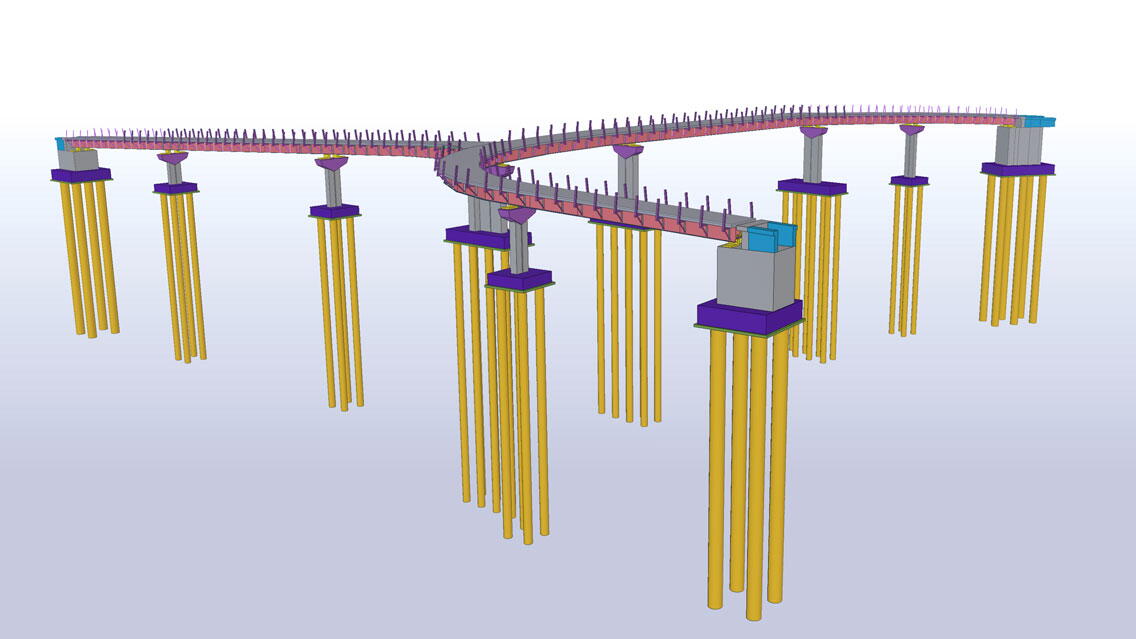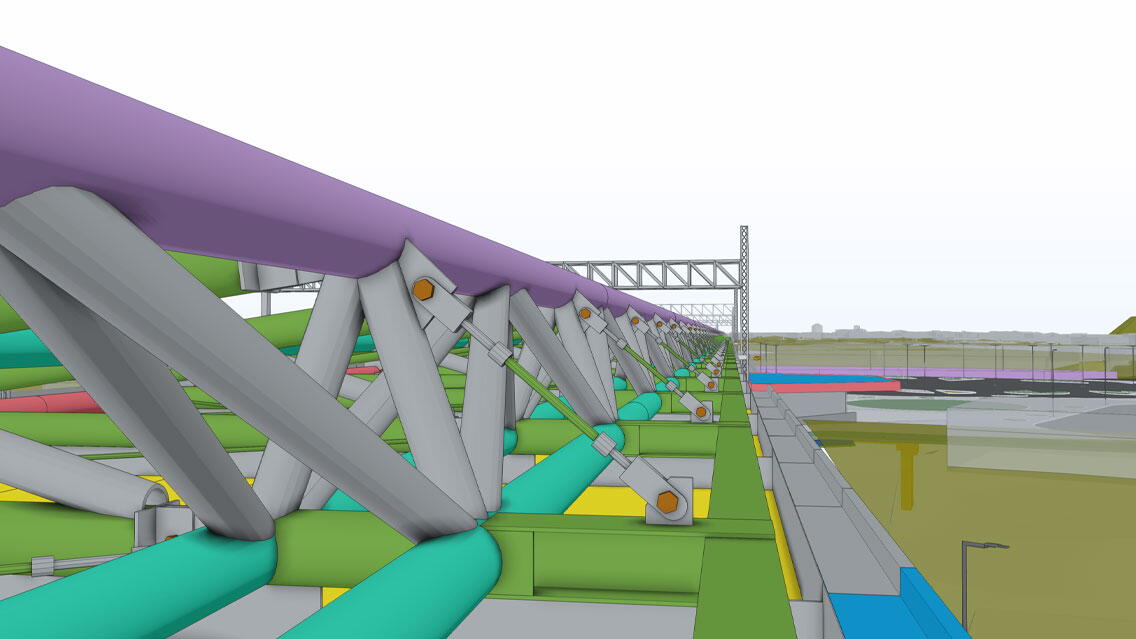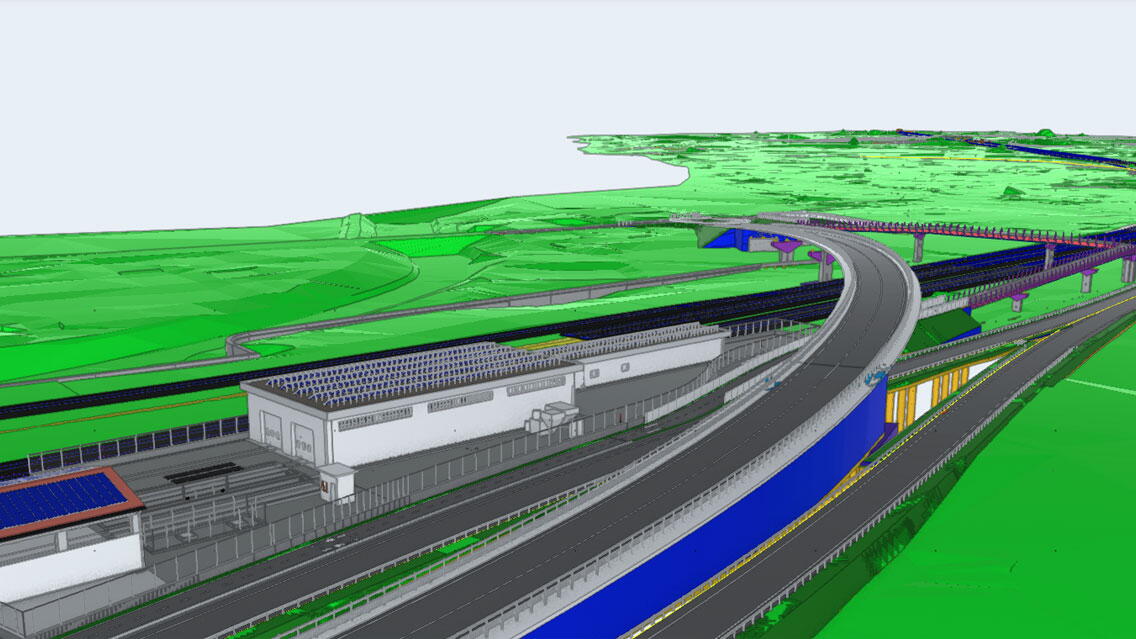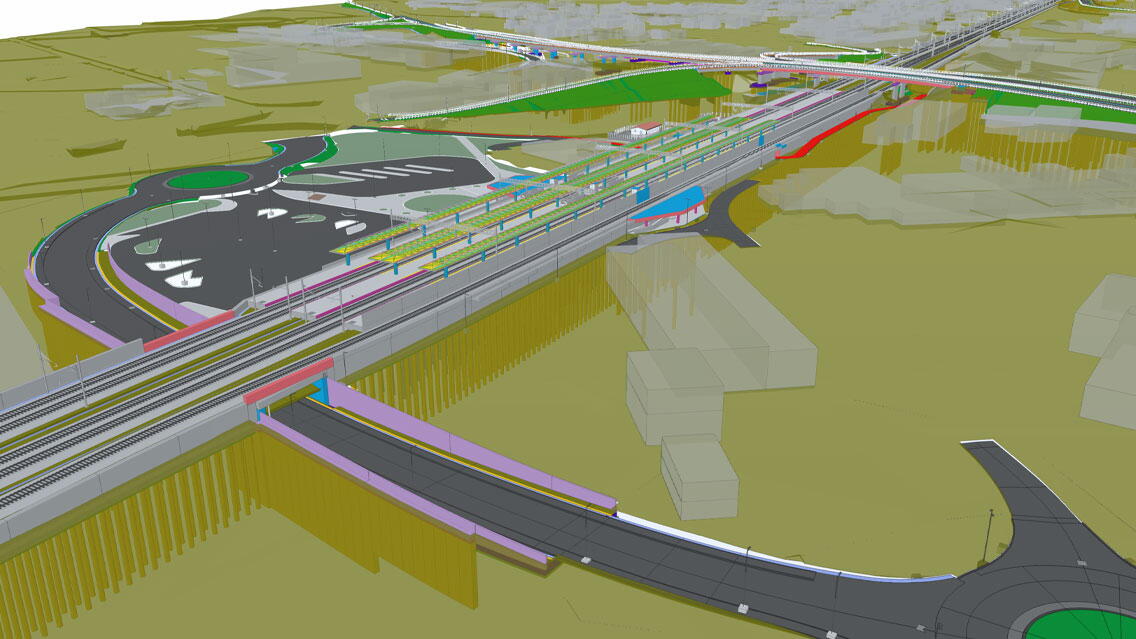The crossing of Vicenza is the second of three functional lots of the new section of the High Speed/High Capacity Verona-Vicenza-Padova railway line.
The work is included in the PNRR and is considered a priority at the European level. It is part of the wider Mediterranean Corridor of the Trans-European network from Spain to the Hungarian/Ukraine border. We designed the work on behalf of the general contractor, the consortium IRICAV2, headed by the company, WeBuild. The customer is RFI.
The labor cost of the final project of the crossing of Vicenza is around EUR 1 billion and is partially funded by PNRR in the category of infrastructure for sustainable mobility. The project involves the construction of the AV/AC line and the existing historic line, which will be diverted in some sections but will remain in operation.
A new stop in the Vicenza Fiera area and the extension of the passenger building of the station of Vicenza, with its underground parking and square surface, are also planned. The project includes various arrangements of the existing roads within Vicenza and the construction of new works such as subways, pedestrian underpasses, railway overpasses, bridges, and viaducts.
The even greater incentive, which makes this project unique for an integrated design, is that the contract, in addition to the final design, includes executive design, construction assistance, and the as-built.
Advantages of using BIM
With the integral application of the BIM methodology and, in particular, Tekla Structures, we have been able to notice and anticipate any interferences and incoherences from the design phase. This is thanks to the use of informative models as a real tool for planning and aggregating related works and disciplines in a single environment.
Each part of the work has been designed to relate to all the other components in play. An example of this is the support wall of the railway embankment, which was designed concerning the morphology of the ground, the railway platform, the hydraulic works, the existing project viability, and the interfering works.
Tekla Structures and the geometrical and algorithmic modeling applications associated with them (Bridge Creator and Grasshopper) have been fundamental for this project. These tools enabled us to put all the variables in play into the system. The result was accurate, reliable, and 100% usable models for the design optimization of all the structures, extraction of precise and reliable quantities, and the quick and efficient production of processed graphics.



